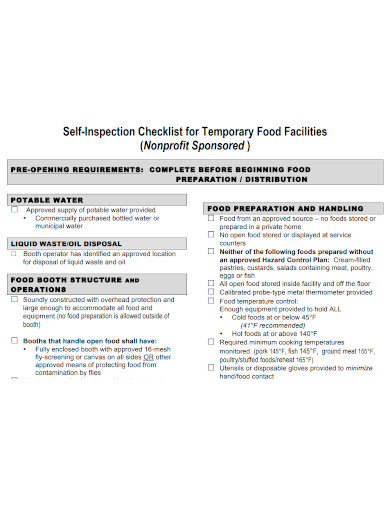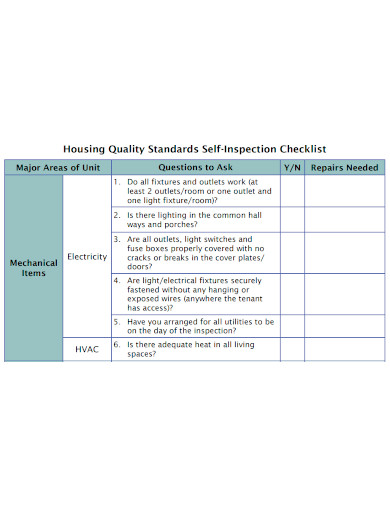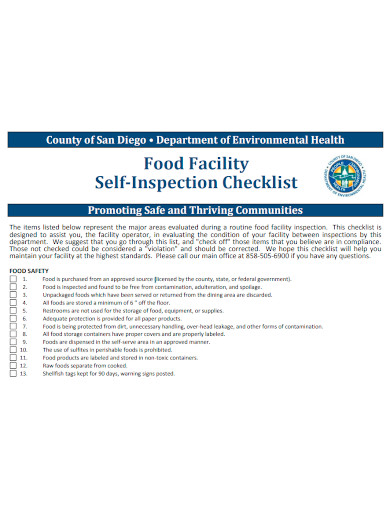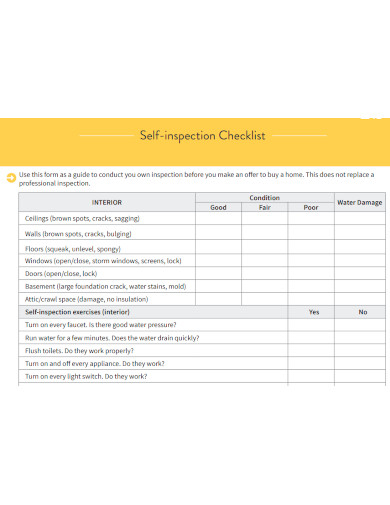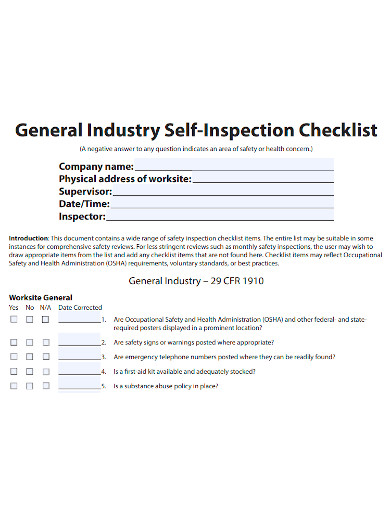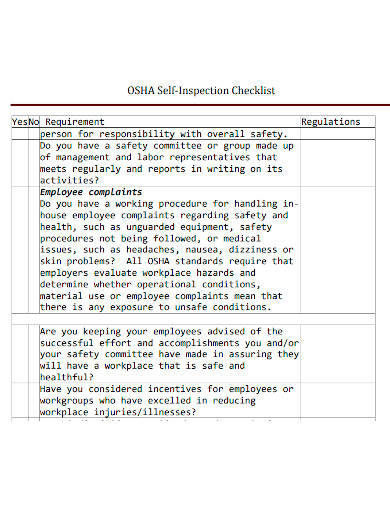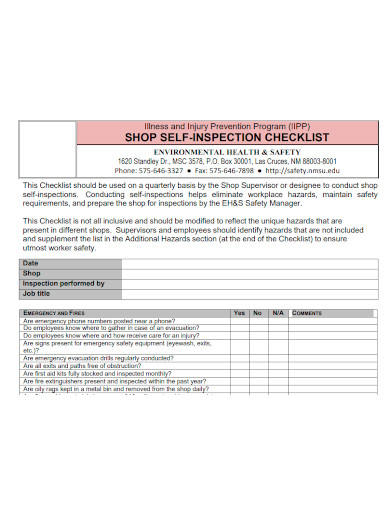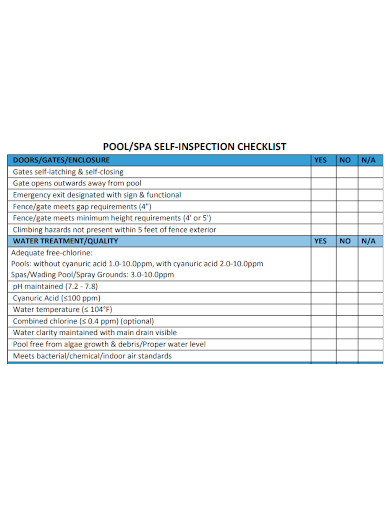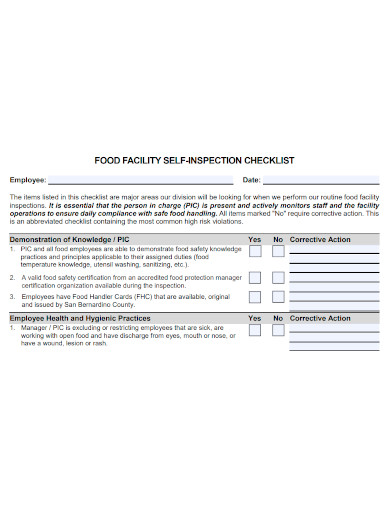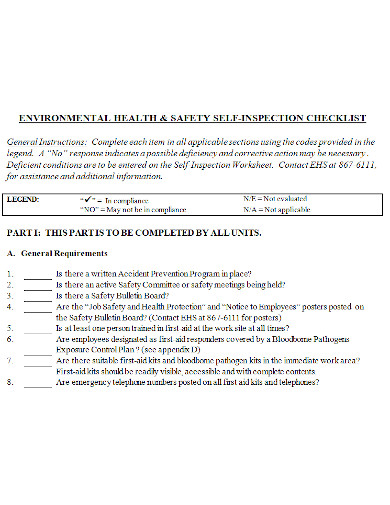Having a regular self-inspection done in your workplace might be one of the most effective way of finding and eliminating hazards. It is always essential to have a list of items that will guide you in looking for it. Self-inspection, especially those that occur in construction sites, are required to be conducted weekly and should be documented. Do not attempt to inspect something that have no application to your business or to your area. Write down what you see or the things that you cannot see but you think can cause a problem. Also, write down what you can possibly do about it. Once all those hazards are already identified, incorporate some control procedures especially to your injury and illness prevention program.
What is self-inspection? It is a method used to have an overall review of the operation especially to those aspects that may have an effect on quality assurance. It naturally aims to identify defects. It is preferred to be conducted by competent persons to be able to monitor the implementation process ensuring that the corrective measures are taken.
The scope of a self-inspection usually includes processing, receiving, shipping and storage, building and grounds condition, housekeeping program, electricity, lighting, heating and ventilation, machinery, personnel, hand and power tools, chemicals, fire prevention, maintenance, and personal protective equipment.
10+ Self-Inspection Checklist Samples
1. Self-Inspection Checklist Sample
2. Housing Quality Standards Self-Inspection Checklist
3. Food Facility Self-Inspection Checklist
4. Food Safety Self-Inspection Checklist
5. Formal Self-Inspection Checklist
6. General Industry Self-Inspection Checklist
7. Standard Self-Inspection Checklist
8. Shop Self-Inspection Checklist
9. Spa Self Inspection Checklist
10. Printable Self Inspection Checklist
11. Safety Self-Inspection Checklist
How to Create and Use a Self-Inspection Checklist?
Checklists that have been generalized cannot guarantee to be effective because some of them might have items that do not necessarily apply to your workplace and far too general to make you check back on specific items in your operation. You have to take note that each items must be checked most especially if you have different departments.
- Select and do not include those items under each category that you think do not apply in your workforce.
- Add new items in the checklist particularly those that are more specific to your operation and on your experience with the causes of the past illnesses or injuries, previous hazards that are identified during the consultation visits and compliance, previous hazards that are noted by your insurance company, and safety issues that you mostly discipline your employees about. It may include PPEs that are not worn or not worn properly, unsafe shortcuts in the processes, etc.
- Add items that are routinely check based on the study of those standards that are used to cover your operations and equipment, work rules, PPE requirement intended for the safety program, and manufacturer’s operating instructions.
- You may also consider leaving blank lines so that the person who is assigned to check can be able to note something like hazardous conditions that did not have the chance to fit in any of the listed items.
Self-inspection duties must be given to people on a rotating basis. This will help you look more hazards that were not seen by the previous inspectors. Sharing this type of responsibility help you raise an awareness and can even help in reinforcing ideas that having a safe workplace is a responsibility of both the management and employees.
FAQs
What is the main purpose of self-inspection?
Its main purpose is to provide an evaluation of the operating system that might be influencing the quality of products and services. This is not just about finding the fault but it is also essential in finding the best way to prevent and overcome the problems.
What is the frequency of self-inspection?
It should be conducted at reasonable intervals. It can be done annually or at short intervals if necessary.
What are the possible coverage of a self-inspection?
It includes personnel, premises and equipment, maintenance, storage, production and in-process controls, quality control, documentation, sanitation and hygiene, validation and revalidation program, distribution, product complain and recall, calibration of instruments, labels control, and results of the previous self-inspection and corrective action.
If you want to see more samples and format, try to check out some self-inspection checklists samples and templates provided in the article for your reference.
Related Posts
FREE 15+ HR Checklist Samples
FREE 14+ Project Management Checklist Samples
FREE 10+ HR Assessment Checklist Samples
FREE 10+ Monitoring Checklist Samples
FREE 10+ Truck Inspection Checklist Samples
FREE 10+ HR Audit Checklist Samples
FREE 10+ Plumbing Maintenance Checklist Samples
FREE 9+ Sample Home Inspection Forms
FREE 8+ Road Test Checklist Samples
FREE 3+ Building Maintenance Checklist Samples
FREE 41+ Printable Checklist Samples
FREE 37+ Checklist Samples
FREE 20+ Monthly Checklist Samples
FREE 16+ Sample Daily Checklists
FREE 10+ Performance Checklist Samples

